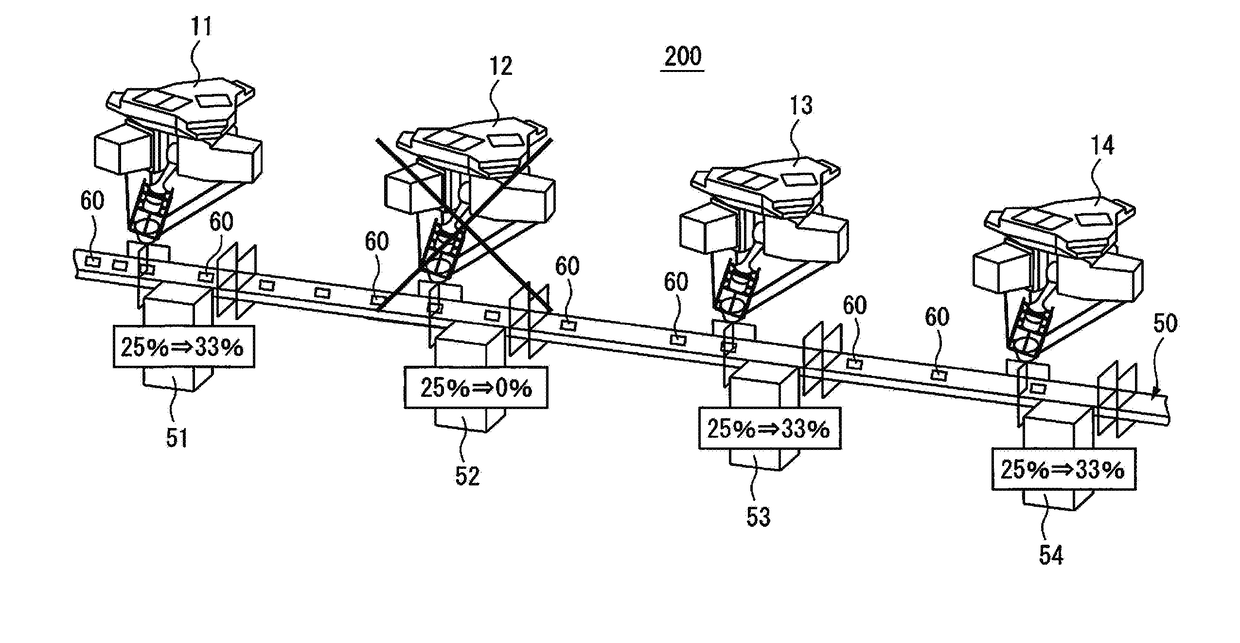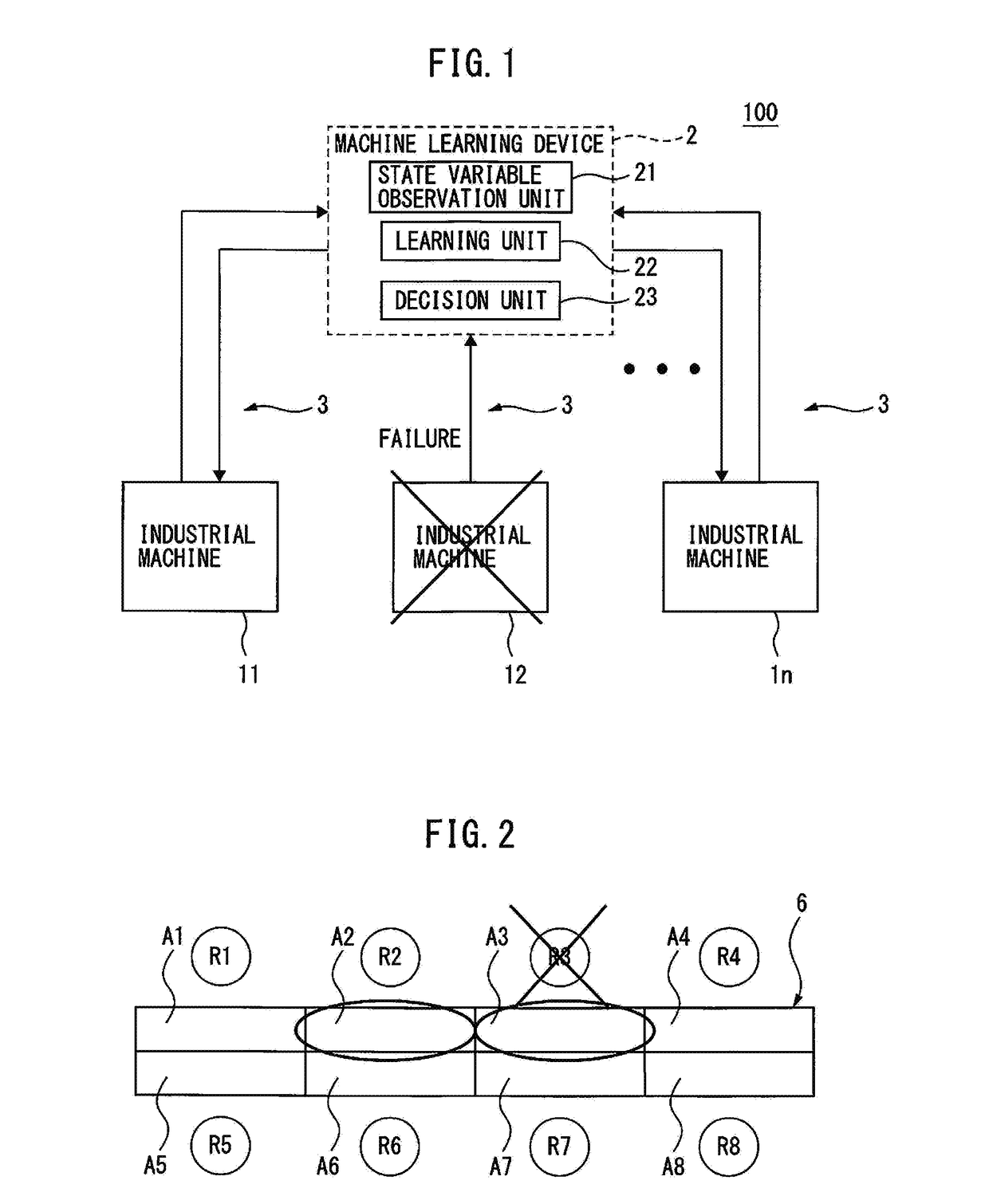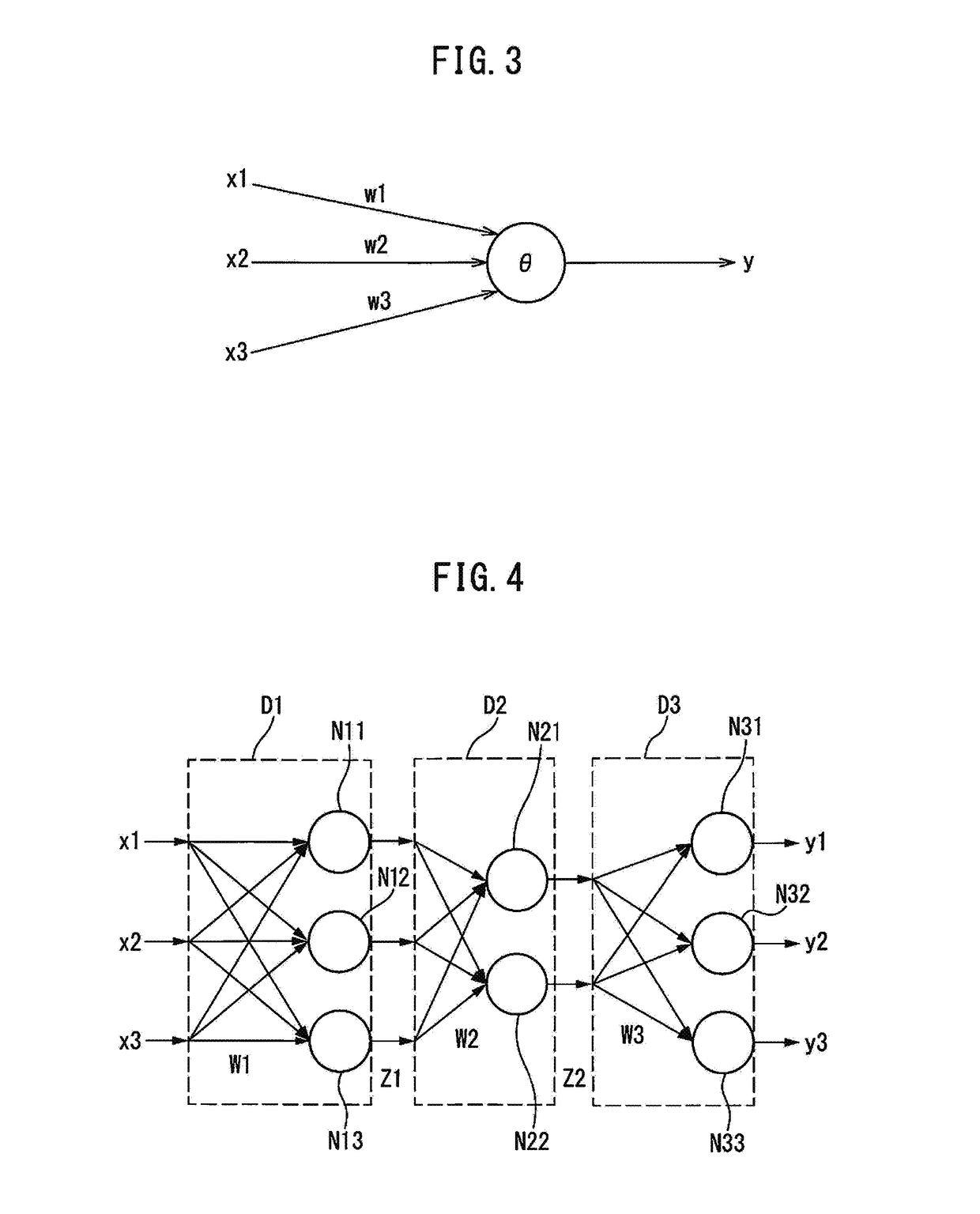Machine learning device, industrial machine cell, manufacturing system, and machine learning method for learning task sharing among plurality of industrial machines
a technology of industrial machines and learning devices, applied in the field of machine learning devices, industrial machine cells, and machine learning methods for learning task sharing among a plurality of industrial machines, can solve the problems of large number of workpieces missing or imperfect task execution, and it is practically difficult to determine the task ratio in advance or dynamically control the task ratio, etc., to maximize the volume of the task
- Summary
- Abstract
- Description
- Claims
- Application Information
AI Technical Summary
Benefits of technology
Problems solved by technology
Method used
Image
Examples
Embodiment Construction
[0033]Before a detailed description of an embodiment of a machine learning device, an industrial machine cell, a manufacturing system, and a machine learning method according to the present invention, an exemplary process of an industrial machine cell when one industrial machine stops, for example, will be described first with reference to FIG. 9. FIG. 9 is a view for explaining an exemplary process when one industrial machine stops in an industrial machine cell. Referring to FIG. 9, reference numerals 11 to 14 denote industrial machines (robots); 50, a conveyor (transport conveyor); 51 to 54, workpiece mounting units; 60, workpieces; and 200, an industrial machine cell.
[0034]As depicted as FIG. 9, the industrial machine cell 200 includes a plurality of robots 11 to 14, which are respectively configured to sequentially pick up the workpieces 60 successively conveyed by the conveyor 50 and place them on the upper surfaces of the corresponding workpiece mounting units 51 to 54. Note t...
PUM
 Login to View More
Login to View More Abstract
Description
Claims
Application Information
 Login to View More
Login to View More - R&D
- Intellectual Property
- Life Sciences
- Materials
- Tech Scout
- Unparalleled Data Quality
- Higher Quality Content
- 60% Fewer Hallucinations
Browse by: Latest US Patents, China's latest patents, Technical Efficacy Thesaurus, Application Domain, Technology Topic, Popular Technical Reports.
© 2025 PatSnap. All rights reserved.Legal|Privacy policy|Modern Slavery Act Transparency Statement|Sitemap|About US| Contact US: help@patsnap.com



